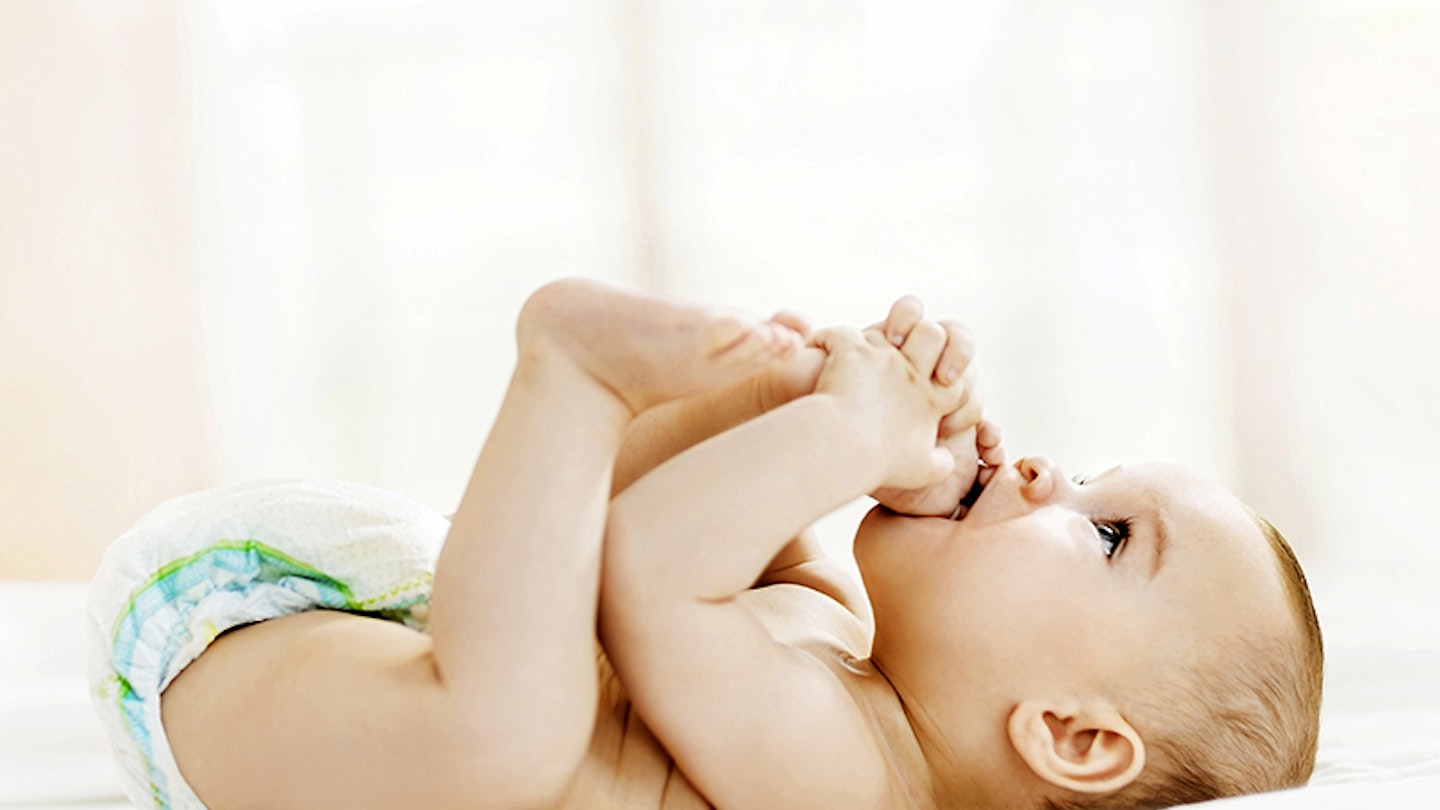You’re already aware of those major milestones your baby will reach one day, such as sitting up on their own, rolling over, crawling and walking. But did you know there are hundreds more skills and mini-milestones they’ll master along the way? And if you share in their joy of movement, you can make a real difference to how they develop.
Here are a few simple exercises you can do with your baby to encourage their development, from newborn to four months.
With our help, you’ll be able to support your baby’s efforts, and celebrate together endless little moments of success, because your attention and interest will motivate them like nothing else.
Freedom to stretch
Lying on their back, and eventually rolling to each side and on to her front, your newbaby is exploring gravity and its magical pull on her body. They're eager to move and discover what they can do.
Your baby needs freedom to move on the floor. It will help if you are close by, as you make them feel secure and supported. Lay a blanket on the floor and lie down with them at her level. Start with 20 minutes together when they are fed, dry, calm and alert, and you can focus entirely on them.
The time spent will naturally get longer as you enjoy this period together everyday, and you notice what your baby is doing. Your attention will show them that you’re interested in what they're doing. Watch out for your baby’s communication cues so you spot when they're happy to continue engaging with you, or when they're ready for a change of pace.
Coordination
Imagine a line that runs from the top of your baby’s head and through their middle. This is called the ‘midline’ and differentiates the right and left sides of the body.
A three-month-old baby lying on their back will have learned how to hold their head in this midline position for brief periods of time. They’ll also be able to bring both hands together, tuck in their chin and look down at their hands. This is the beginning of them using both eyes together to focus on their hands.
Place your baby on the floor, lying on their back. Hold a soft toy so it lightly touches their belly button (on the midline). This encourages them to gaze downward, and bring their hands together to grasp the toy. This helps them learn to co-ordinate both sides of their body together at the same time.
When your baby can bring their hands together at the midline, they may go further and match their fingers together.
To join in their journey of awareness, touch your baby’s thumb, and each of their fingers in turn, while saying, ‘This is your thumb, this is your pointer finger, this is your middle finger, this is your ring finger, and this is your little finger.’ Start with the right hand, and repeat with the left hand.
Following objects
Your baby’s eyes are beginning to work together. A three-month-old baby is starting to be able to track a toy more smoothly from left to right or vice versa.
Sit with your legs wide in a V-shape on the floor, and lay your baby on their back between your legs. Engage their attention by looking at them and smiling. Hold a small toy in your right hand, centred over the midline and wait until they focus on it. Moving your hand steadily, move the toy from the midline to their right side, then back across their midline to their left side, before returning to the midline.
Handling objects
Give your baby a soft toy that’s easy for them to hold and explore. They'll use their body to find out about the shape, size, weight and texture of the toy, which helps them work out what they need to do to move and handle it.
More from Motherandbaby.com
-
Your Baby’s Development Firsts – From Newborn To Three Months
-
Whether you’re planning your new baby essentials shopping list, giving friends and family gift ideas, or planning for your baby shower, the Amazon Baby Wish List allows you to keep track of all your shopping ideas in one place. Click here to start yours today!
What milestones has your baby reached? Let us know on Twitter! And while you're there, follow us on Instagram and Facebooktoo!
